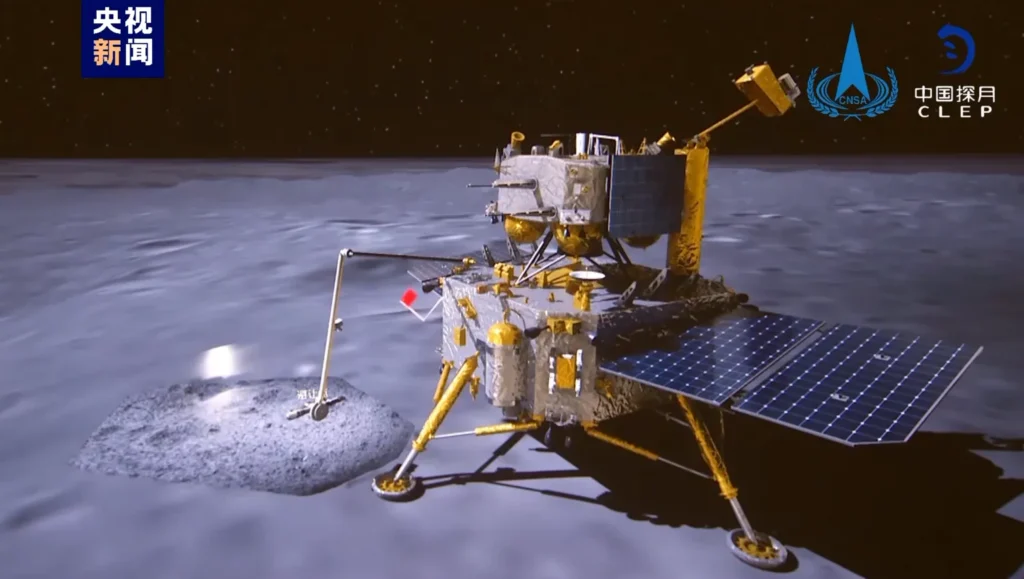Chinese Spacecraft Lifts Off from Far Side of Moon with First-Ever Samples
A Chinese lunar probe has embarked on its return journey to Earth, carrying a groundbreaking collection of rock and soil samples from the far side of the moon. This mission marks a significant milestone in lunar exploration, as China becomes the first nation to retrieve material from this previously uncharted territory.

The Chang’e-6 spacecraft, named after the moon goddess in Chinese mythology, successfully touched down near the moon’s south pole on Sunday. This landing, a first for any country, opened the door to the collection of potentially ancient rocks within the South Pole-Aitken basin, one of the largest craters in the solar system.
The challenging lunar terrain and the far side’s distance from Earth necessitated the use of a relay satellite to maintain communication with the Chang’e-6. After a two-day sampling process, the craft’s ascent module lifted off on Tuesday, carrying a precious cargo of about 2 kilograms of lunar material.
Scientists around the world are eagerly awaiting the arrival of these samples, which hold the potential to unlock secrets about the moon’s formation and early history. Analyzing rocks from a completely unexplored region could provide crucial insights into the development of planets.
This mission represents China’s second attempt at lunar sample collection, following the successful Chang’e-5 mission in 2020 that retrieved material from the moon’s near side. China’s space program has set its sights even higher, planning three more robotic missions this decade to search for water ice deposits and assess the feasibility of a permanent lunar base.
The successful retrieval of lunar samples from the far side solidifies China’s position as a major player in space exploration. This accomplishment paves the way for further lunar exploration and international scientific collaboration, while also fueling China’s ambitions to send astronauts to the moon by 2030. The race to unlock the mysteries of the moon continues to heat up, with both China and the United States (through NASA’s Artemis program) aiming to establish a lasting human presence on Earth’s celestial neighbor.


